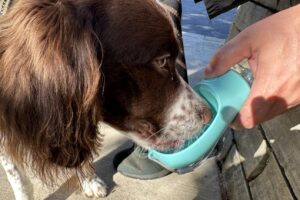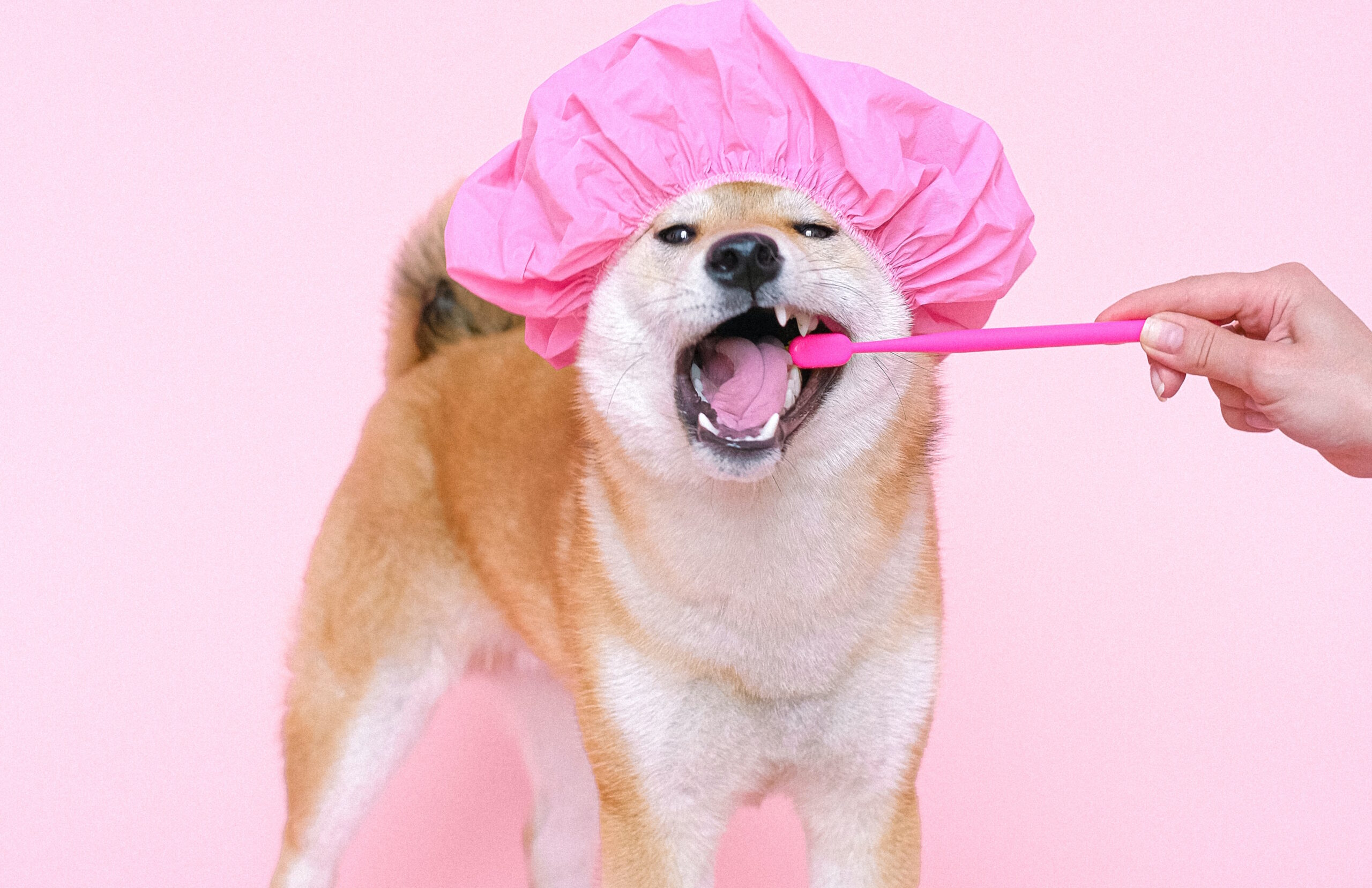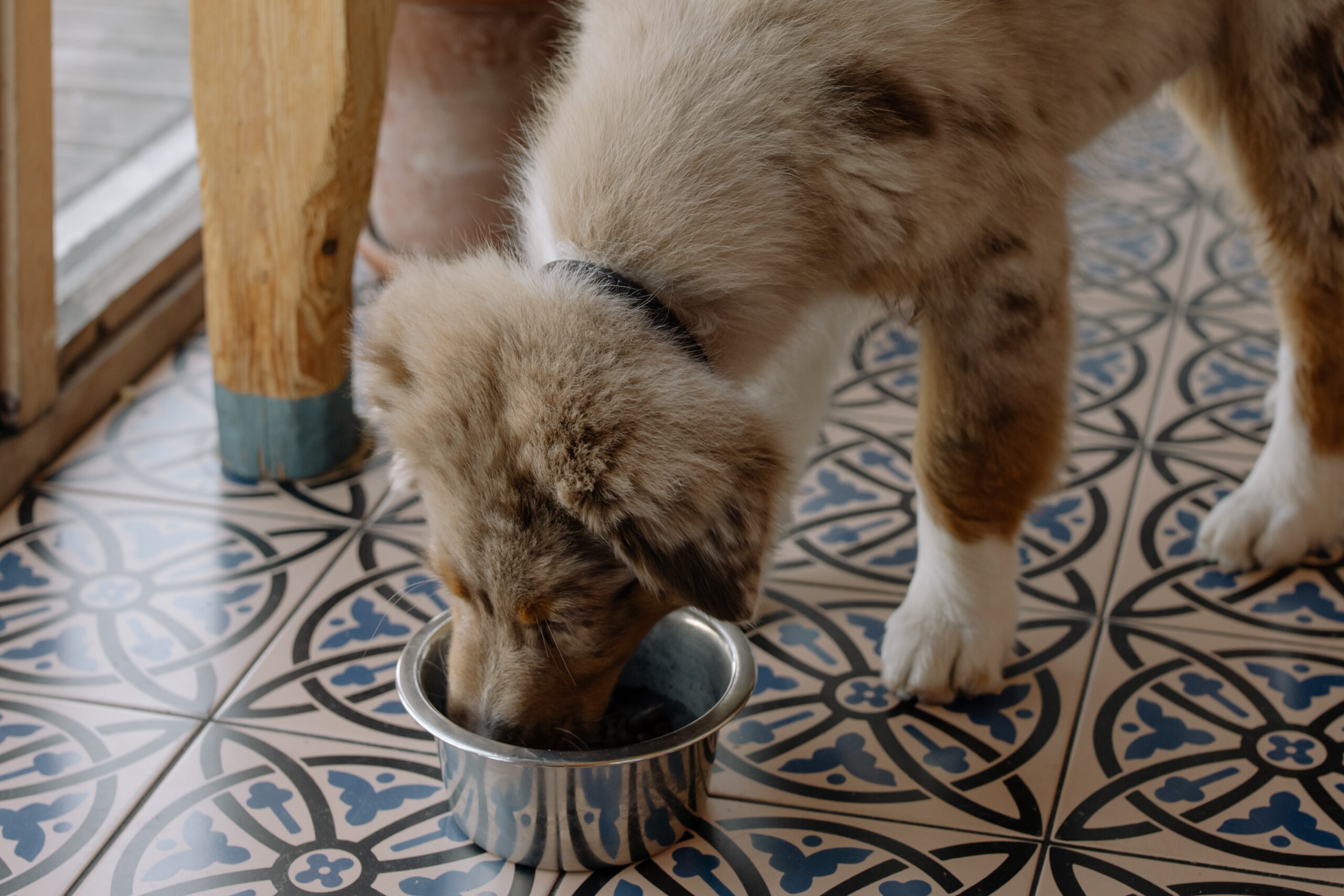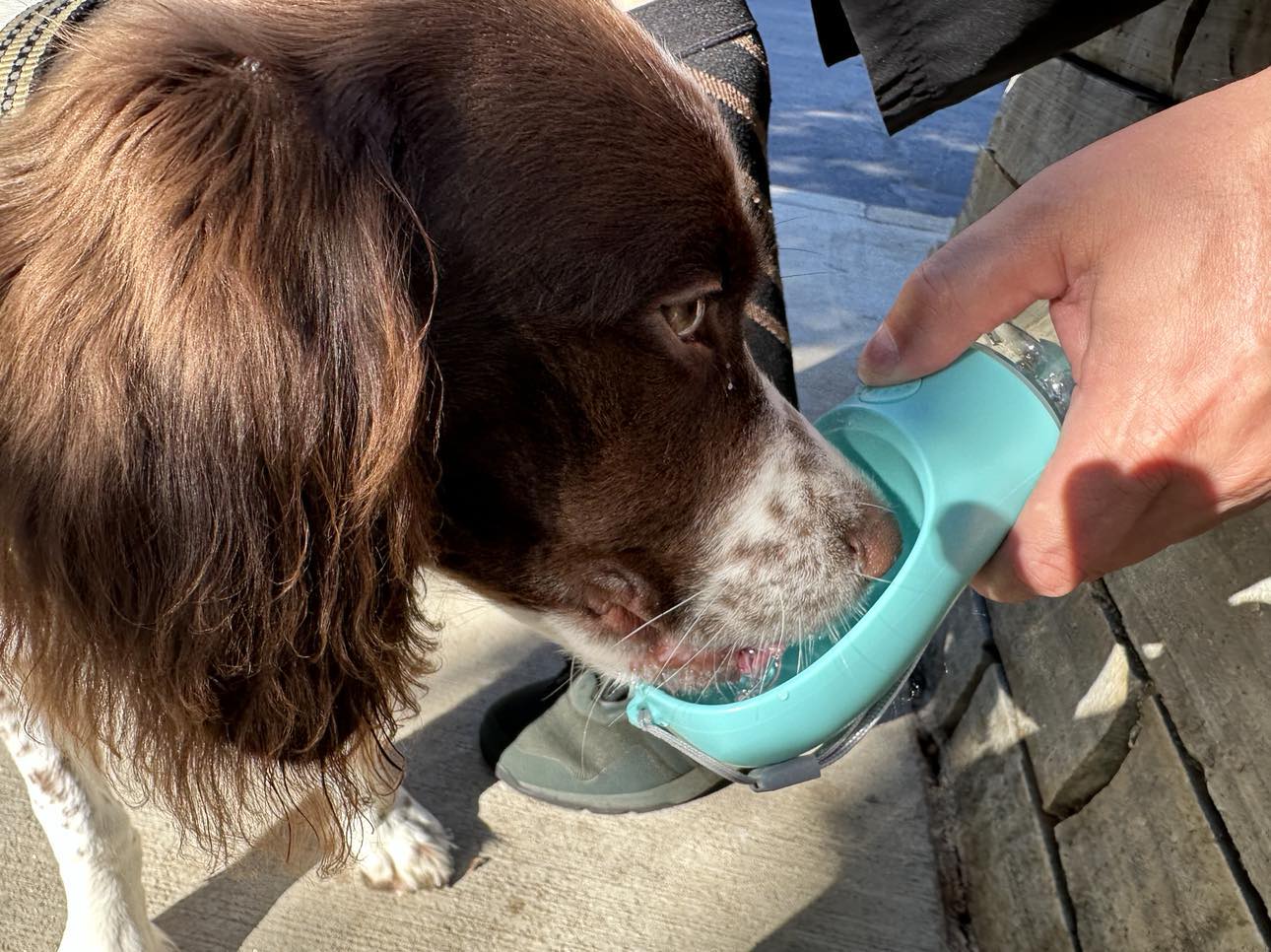I. Introduction
Did you know that dental health plays a vital role in the overall well-being of our furry friends? Imagine if you couldn’t brush your teeth regularly, how would your oral health be? The same goes for dogs!
Just like humans, dogs can experience dental problems that can affect their quality of life. Poor oral hygiene in dogs can lead to issues such as gum disease, tooth decay, bad breath, and even more serious conditions like infections and tooth loss. Taking care of your dog’s dental health is essential for their overall health and happiness.
In this article, we will delve into the world of dog toothbrushes and explore their significance in maintaining optimal oral hygiene for our beloved canine companions. Understanding the importance of dog dental care and finding the right toothbrush are crucial steps towards ensuring our dogs have healthy and happy smiles. Let’s embark on this journey to discover the best practices for dog dental care and how dog toothbrushes can make a significant difference in their well-being.
II. The Importance of Dog Dental Care
Neglected dental care in dogs can lead to a range of common dental problems. Without proper oral hygiene, dogs are prone to plaque and tartar buildup, which can result in gum disease (periodontal disease). Gum disease can cause inflammation, pain, bleeding gums, and even tooth loss. Additionally, untreated dental issues can lead to more severe conditions, such as oral infections and abscesses, which can impact the overall health of your dog.
Oral health is closely linked to the overall well-being of dogs. Dental problems not only affect their ability to eat comfortably but can also have systemic effects on other organs, including the heart, liver, and kidneys. Poor oral health has been associated with an increased risk of developing other health conditions, such as cardiovascular disease and kidney infections. By maintaining good dental care, we can help promote the overall health and longevity of our canine companions.
Regular brushing is a crucial component of preventive dental care for dogs. Brushing your dog’s teeth helps remove plaque, bacteria, and food particles that accumulate on the teeth and gums. By preventing the buildup of plaque, you can reduce the risk of gum disease and other dental issues. Brushing also helps maintain fresh breath and promotes healthy gums. Establishing a routine of regular brushing can significantly improve your dog’s dental health and prevent future dental diseases.
III. Understanding Dog Toothbrushes
When it comes to toothbrushes, there are notable differences between human and dog toothbrushes. Human toothbrushes are designed specifically for our mouths, with bristles and shapes tailored to fit our teeth and gums. Dog toothbrushes, on the other hand, are designed with the unique anatomy of a dog’s mouth in mind. They are typically smaller in size and have softer bristles to accommodate the different structure of a dog’s teeth and gums.
Dog toothbrushes have key features and design elements that make them suitable for canine dental care. They often have an angled head to reach the back teeth more easily, as well as a long handle to provide better control during brushing. The bristles are usually softer to prevent gum irritation, and some brushes have dual-sided bristles to clean both the outer and inner surfaces of the teeth simultaneously. Dog toothbrushes also come in various sizes to cater to different breeds and mouth sizes.
The market offers several types of dog toothbrushes to cater to different preferences and needs. Traditional toothbrushes for dogs resemble human toothbrushes but with dog-specific adaptations, as mentioned earlier. Finger toothbrushes, as the name suggests, fit over your finger, allowing for a more controlled and precise brushing experience. They are particularly useful for dogs who are not accustomed to traditional toothbrushes. Additionally, there are toothbrushes that attach to the end of a finger glove, providing a similar brushing experience. Each type of toothbrush has its advantages, and choosing the one that works best for you and your dog’s needs is essential for effective dental care.
Understanding the differences between human and dog toothbrushes and exploring the various types available in the market can help you make an informed decision when selecting the right toothbrush for your canine companion. By choosing a toothbrush specifically designed for dogs, you can ensure a more comfortable and effective brushing experience.
IV. Choosing the Right Dog Toothbrush
When it comes to choosing a dog toothbrush, several factors should be considered to ensure the best fit for your furry friend.
- Size and Breed: Take into account the size and breed of your dog when selecting a toothbrush. Smaller breeds may require smaller toothbrush heads to comfortably reach all teeth, while larger breeds may need larger brushes for adequate coverage.
- Soft Bristles: Opt for a toothbrush with soft bristles to prevent gum irritation and discomfort for your dog. Hard bristles can be harsh on their sensitive gums and may cause pain or bleeding.
- Handle Grip and Control: Look for a toothbrush with a handle that provides a comfortable grip and allows for better control during brushing. This will make the brushing process easier for both you and your dog.
Additionally, consider your dog’s preferences and temperament when choosing a toothbrush. Some dogs may prefer finger toothbrushes or toothbrushes that attach to a finger glove, as these can provide a more familiar and less invasive brushing experience.
It’s worth noting that there are alternative options available, such as dog toothbrushes that fit onto your finger, which can be useful for dogs who are resistant to traditional toothbrushes. These alternatives can still effectively clean your dog’s teeth and gums while accommodating their comfort levels.
Choosing the right toothbrush for your dog is crucial for successful and stress-free dental care. By considering factors such as size, bristle softness, handle grip, and your dog’s preferences, you can ensure a more enjoyable brushing experience and promote better oral hygiene for your canine companion. Remember, a comfortable toothbrush will help establish a consistent dental care routine for your dog’s long-term dental health.
V. Introducing Your Dog to Toothbrushing
Introducing toothbrushing to your dog requires patience and a gradual approach. Follow these step-by-step instructions to help your dog become comfortable with the process:
- Start Slowly: Begin by introducing your dog to the toothbrush and toothpaste without actually brushing their teeth. Allow them to sniff and investigate the toothbrush to familiarise themselves with it.
- Taste the Toothpaste: Squeeze a small amount of dog-friendly toothpaste onto your finger and let your dog lick it off. This helps them get accustomed to the taste and texture of the toothpaste, which is specially formulated for dogs.
- Gentle Touch: Once your dog is comfortable with the toothpaste, introduce gentle touches with the toothbrush. Rub the toothbrush against their gums and teeth in a slow and gentle motion. Focus on a few teeth at a time to avoid overwhelming them.
- Gradual Progression: Gradually increase the duration and area you brush each time, making sure to stay within your dog’s comfort zone. Be patient and take breaks if needed. The goal is to establish a positive association with toothbrushing.
To make the toothbrushing process more comfortable for both you and your dog, consider the following tips and techniques:
- Positive Reinforcement: Use treats, praise, and rewards to reinforce positive behaviour during toothbrushing. This helps create a positive association and makes the experience more enjoyable for your dog.
- Proper Restraint: For safety and effectiveness, ensure your dog is properly restrained during toothbrushing. Use a gentle and supportive hold, or consider using a grooming table or a non-slip mat to provide stability.
- Take it Slow: If your dog becomes anxious or resistant, take a step back and proceed more slowly. Revisit previous steps or reduce the brushing time until your dog feels more comfortable.
- Playful Approach: Incorporate playfulness into the process by using a soothing and cheerful tone of voice, offering praise and encouragement, and turning toothbrushing into a bonding activity.
Patience and positive reinforcement are key during the training period. Some dogs may take longer to adjust to toothbrushing than others. Stay consistent, patient, and supportive throughout the process. If necessary, consult with a veterinarian or professional dog trainer for additional guidance and advice.
Remember, the goal is to establish a regular tooth brushing routine that benefits your dog’s oral health. With time and effort, toothbrushing can become a positive and rewarding experience for both you and your furry companion.
VI. Dental Care Beyond Brushing
In addition to regular toothbrushing, there are other complementary dental care products that can contribute to your dog’s oral health:
- Dog-Friendly Toothpaste: Dog-specific toothpaste comes in flavors that are appealing to dogs and safe for them to swallow. It contains enzymes and ingredients that aid in breaking down plaque and reducing bacteria in their mouth.
- Dental Chews and Treats: Dental chews and treats are designed to promote chewing, which helps reduce plaque and tartar buildup. Look for products with a seal of approval from veterinary dental organisations to ensure they are effective and safe for your dog.
Professional dental cleanings and regular veterinary check-ups are essential components of your dog’s dental care routine:
- Professional Dental Cleanings: Just like humans, dogs may require professional dental cleanings to remove stubborn tartar and plaque buildup. These cleanings are typically performed under anaesthesia by a veterinarian to ensure thorough cleaning and examination of your dog’s teeth and gums.
- Regular Veterinary Check-ups: Regular check-ups allow your veterinarian to assess your dog’s dental health and detect any potential issues early on. They can provide professional guidance, perform dental examinations, and recommend appropriate treatments or preventive measures.
A balanced diet and appropriate chew toys also play a significant role in maintaining your dog’s oral health:
- Balanced Diet: Feeding your dog a balanced diet that includes high-quality dog food can contribute to their overall dental health. Some specialised dental diets are formulated to promote oral health by reducing plaque and tartar buildup.
- Chew Toys: Chew toys, specifically designed for dental health, can help reduce plaque and tartar buildup by promoting chewing and providing mechanical cleaning action. Look for toys made of durable materials that are safe for your dog to chew on.
Maintaining oral health for your dog goes beyond brushing. By incorporating dog-friendly toothpaste, dental chews, professional cleanings, regular veterinary check-ups, a balanced diet, and appropriate chew toys, you can provide comprehensive care to support your dog’s oral health and overall well-being. Remember to consult with your veterinarian for specific recommendations tailored to your dog’s needs.
VIII. Conclusion
In conclusion, we have explored the significance of dog toothbrushes in promoting oral hygiene for our canine companions. We discussed the importance of maintaining good dental care for dogs, as neglecting oral health can lead to dental problems and impact their overall well-being.
Regular tooth brushing plays a vital role in preventing dental diseases such as gum disease and tooth decay. By establishing a routine and using dog-specific toothbrushes with soft bristles, we can effectively remove plaque and maintain healthy gums.
It is crucial to prioritise your dog’s oral health by investing in a suitable dog toothbrush and establishing a dental care routine. Remember to introduce toothbrushing gradually, use positive reinforcement, and be patient during the training process. Additionally, consider complementary dental care products like dog-friendly toothpaste and dental chews, and seek professional dental cleanings and regular veterinary check-ups for optimal oral health.
By prioritising your dog’s dental care, you can contribute to their overall health and well-being. Take action today to start a dental care routine that includes regular toothbrushing and other preventive measures. Your dog will thank you with a healthy and happy smile that will brighten both of your lives.










